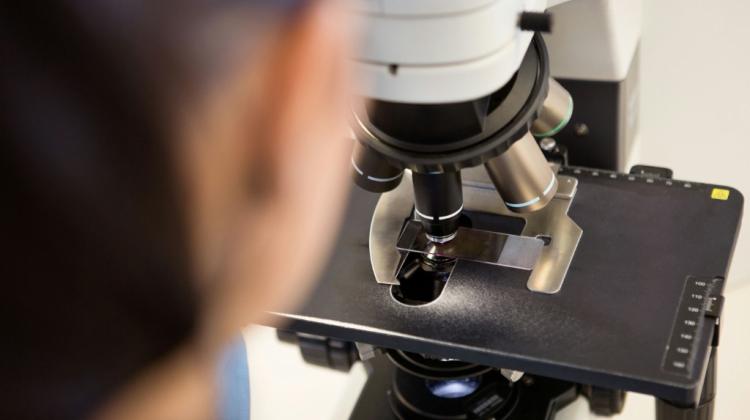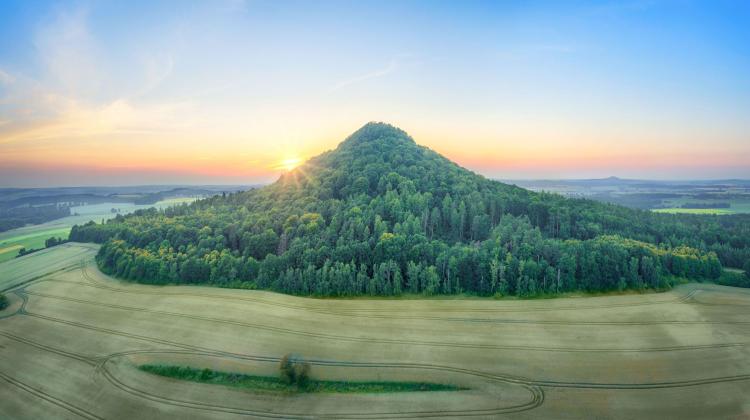Zircon can lead researchers investigating the origins of the Earth astray
 Photo: Fotolia
Photo: Fotolia
Zircon - used to determine the time of formation of the oldest rocks on Earth - can lead researchers astray. When dating with this mineral, error can sometimes be as high as five hundred million years - showed the team led by Polish researcher.
WITNESSES OF THE BIRTH OF THE EARTH
We already known that the Earth was formed approx. 4.6 billion years ago, but there are still many gaps in knowledge about the beginnings of our planet. The only "witnesses" of the birth of the Earth are the oldest minerals and rock fragments. But the search for these ancient stones is not at all easy. Chemical reactions changing the structure of matter have been taking place for billions in the Earth\'s crust, so it is hard to find minerals that were not affected by such changes. Another problem of interest to scientists is geochronology of rocks, and thus determining their age.
"The only mineral, which can be used to date rocks that are more than 4 billion years old, is zircon - zirconium silicate" - said in an interview with PAP research leader, Dr. Monika A. Kusiak from the Institute of Geological Sciences PAS. She explained that zircon occurs in many types of rocks in the form of tiny grains. This mineral contains enough uranium 235 and uranium 238, which decay to radiogenic lead 207 and 206 at a constant rate. The ratios of these isotopes allow geochronologists to calculate the age of the sample.
OLDEST STONES IN THE WORLD
The world\'s oldest zircon grains to date - and the oldest yet discovered minerals - have been identified in the Jack Hills in Western Australia. Zircon found there is 4.46 billion years old, but it has been incorporated into a much younger rock. The oldest rock - gneiss found in Canada (it also contains zircon) - is 4.03 billion years old. Other oldest rocks on the planet include rocks found in Greenland, in Northern China and rocks from Enderby Land in Eastern Antarctica. The age of the latter has been estimated at nearly 4 billion years.
Zircon grains from the Antarctic, however, found its way into the hands of Dr. Monika A. Kusiak and her team of researchers from Australia, Germany and Sweden. Researchers began to suspect that the mineral was much younger than previously determined. Further detailed studies on a single zircon microsample showed something strange - at one time that the mineral was 3.5 billion years old, and at another - that it was 4 billion years old.
Geologists are not worried about dating errors on the order of decades, centuries, and sometimes thousands or millions of years. But inaccuracies reaching five hundred million years? It was too much to let go. Monika A. Kusiak’s team decided to find the reason for these differences. From the zirconium microsample geochronologists cut even smaller fragment, with a side on the order of nanometers - and thoroughly examined its structure.
LEAD THAT CONCENTRATED
Under transmission electron microscope they noticed something unexpected in zircon grains - irregular clusters of metallic lead nanospheres. In some places, the amount of lead was very high, in others - much lower. And that completely changed the dating results. If during the measurement researchers stumbled upon a cluster of lead - the age of zirconium appeared to be older, and if they missed a cluster - the age of zirconium would be younger. It was enough to shift measuring spot by few nanometers.
Dr. Kusiak said that it was the world's first discovery of irregular distribution of lead in zircon. Clusters of metallic lead nanospheres - according to Kusiak - may have formed in the past when the mineral was exposed to high temperatures, which changed the arrangement of lead in the mineral. The team’s research results were published in April in the prestigious journal PNAS (http://www.pnas.org/cgi/doi/10.1073/pnas.1415264112)
Dr. Kusiak’s team estimates that the zircon from the Antarctic is not 4 billion years old, but much younger - approx. 3.6 billion years old. These results can make the rock with Enderby Land drop significantly in the ranking of the oldest rocks in the world. "In some other cases, it will also have to be verified whether some of the oldest rocks in the world are indeed that old" - commented the researcher.
PAP - Science and Scholarship in Poland, Ludwika Tomala
lt/ agt/
tr. RL
Przed dodaniem komentarza prosimy o zapoznanie z Regulaminem forum serwisu Nauka w Polsce.














